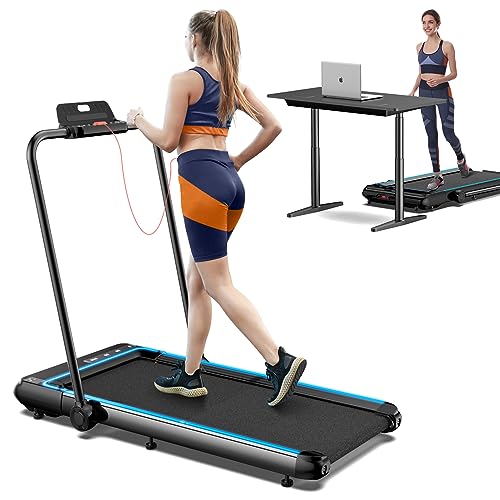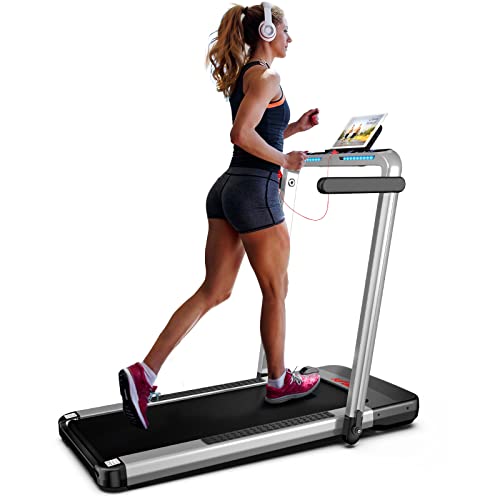cheap-treadmill5672
cheap-treadmill5672
You’ll Never Be Able To Figure Out This Tread Mill’s Tricks

The Treadmill: A Comprehensive Guide to Understanding and Utilizing This Fitness Machine
Treadmills are a staple in health clubs and homes alike, serving as an effective tool for cardiovascular exercise. With their versatility and variety of features, treadmills cater to users of all fitness levels. This short article looks into the ins and outs of treadmills– covering their advantages, types, usage ideas, upkeep, and a lot more.
The Benefits of Using a Treadmill
Making use of a treadmill can provide various health benefits, making it a popular choice amongst fitness lovers. Below are some crucial benefits:
-
Cardiovascular Health: Regular treadmill use can enhance heart health by increasing aerobic capability and cardiovascular endurance.
-
Weight Management: Treadmills enable users to burn calories efficiently, helping in weight loss or management.
-
Convenience: With the ability to work out inside, treadmills eliminate environmental barriers, like weather condition and time restrictions.
-
Adaptability: Users can manage speed, slope, and workout duration, permitting them to tailor their exercise routine to fit their needs.
-
Joint Impact: Many modern treadmills provide cushioning, which can minimize the effect on joints compared to operating on tough surface areas.
This detailed guide analyzes the different types of treadmills and what functions to think about when purchasing one.
Types of Treadmills
Selecting the best type of treadmill depends on specific fitness objectives, budget plan, and offered area. Here are the different varieties:
1. Handbook Treadmills
- Meaning: These treadmills run without motors; users power the belt through their movements.
- Advantages: Typically more budget friendly and energy-efficient.
- Downsides: Limited functions and less stability compared to motorized alternatives.
2. Motorized Treadmills
- Definition: Equipped with motors to manage belt speed and slope.
- Benefits: Versatile features like preset programs and digital screens.
- Drawbacks: More expensive and require electric outlets.
3. Folding Treadmills
- Meaning: Treadmills that can be collapsed to save area when not in use.
- Advantages: Ideal for those with minimal area.
- Disadvantages: May not be as durable, depending upon the design.
4. Business Treadmills
- Meaning: High-quality, durable machines created for frequent use in fitness centers.
- Benefits: Built to hold up against strenuous exercises with functions suited for diverse training needs.
- Downsides: Generally more costly and larger.
5. Smart Treadmills
- Meaning: Treadmills geared up with clever technology that tracks workouts and provides virtual training.
- Advantages: Interactive features improve the user experience.
- Downsides: Higher expenses and prospective for technical problems.
Functions to Consider When Buying a Treadmill
When purchasing a treadmill, it’s crucial to evaluate its functions according to personal needs and spending plan. Important functions include:
-
Motor Power: Measured in horsepower (HP); a motor in between 2.0– 3.0 HP is suitable for the majority of users.
-
Running Surface: The belt size ought to accommodate your stride. A surface of at least 20″ x 55″ is usually recommended.
-
Incline Options: Look for a treadmill offering numerous incline levels to replicate outside running and increase exercise intensity.
-
Weight Capacity: Ensure the treadmill can support the user’s weight; most can accommodate weights in between 250 pounds and 400 pounds.
-
Cushioning: Good quality cushioning effects walking or running convenience and can assist prevent injuries.
-
Foldability: If space is an issue, think about a treadmill that can be folded.
-
Technology: Features like heart rate screens, workout programs, and Bluetooth connectivity can improve the user experience.
Table: Key Features and Considerations
| Function | Significance |
|---|---|
| Motor Power | Vital for constant efficiency and user weight capability. |
| Running Surface | Effects user comfort and stride length; bigger surfaces are better for taller individuals. |
| Slope Options | Enables different workouts and targets various muscle groups. |
| Weight Capacity | Important for safety and sturdiness; select a model that supports your weight. |
| Cushioning | Minimizes joint impact and makes workouts more comfortable. |
| Foldability | Essential for users with limited space. |
| Innovation | Improves exercise experience and can provide important tracking information. |
Tips for Effective Treadmill Workouts
To optimize the benefits of utilizing a treadmill, consider the following suggestions:
-
Warm-Up and Cool-Down: Always begin with a 5-10 minute warm-up and surface with a cool-down to avoid injury.
-
Differ Your Workouts: Mix walking, jogging, and running to keep things interesting and work various muscle groups.
-
Include Incline: Use slope settings to challenge yourself and increase calorie burn.
-
Stay Hydrated: Keep water neighboring to remain hydrated during your exercises.
-
Listen to Your Body: Pay attention to any discomfort or fatigue; rest when required.
Treadmill Maintenance Tips
To make sure durability and optimum performance of a treadmill, regular maintenance is important. Secret upkeep practices include:
-
Lubrication: Frequently oil the running belt for smoother operation.
-
Cleaning up: Wipe down the machine after each use to avoid dust and sweat accumulation.
-
Tightening up: Regularly examine and tighten up loose bolts or tread mill screws.
-
Examine the Belt Alignment: Ensure the belt is lined up appropriately, changing as needed for even wear.
Regularly Asked Questions (FAQs)
1. How frequently should I use a treadmill for weight loss?
Utilizing a treadmill for a minimum of 150 minutes of moderate-intensity aerobic workout weekly can contribute to weight reduction.
2. Can I walk on a treadmill every day?
Yes, walking on a treadmill daily can be helpful; however, including rest days is recommended to avoid overuse injuries.
3. What should I use when using a treadmill?
Choose comfy, moisture-wicking clothing and supportive shoes to boost your workout experience.
4. Is it better to walk or work on a treadmill?
Both walking and running offer distinct advantages; the best choice depends upon your fitness level, objectives, and personal preference.

5. Exist specific treadmills designed for small areas?
Yes, folding treadmills and compact styles are appropriate for small areas. Constantly check measurements before purchasing.
The treadmill remains a versatile and extensively utilized piece of physical fitness equipment. Its mix of convenience, versatility, and efficiency makes it ideal for users varying from beginners to experienced athletes. By comprehending the different types and features, as well as integrating diverse exercises, users can maximize the benefits of their treadmill regimen. Whether for cardiovascular training, weight loss, or merely keeping an active lifestyle, treadmills supply a reputable opportunity for attaining fitness goals.


